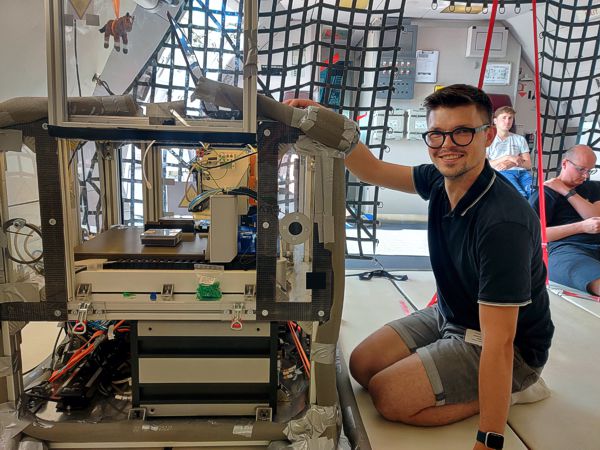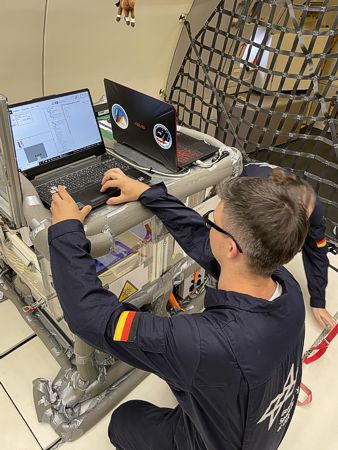A GeSiM Bioprinter beyond Gravity:
A team from Dresden University Hospital has now tested a GeSiM bioprinter in a non-gravitational environment. The device was taken on board of an AIR ZERO G aircraft and put into operation there. During several parabolic flights, it was possible to demonstrate that the device functions perfectly in a micro-G environment.
This work is part of the DALERA project (development of a gravity-independent biofabrication project). 3D bioprinting enables the production of patient-specific tissue constructs and could help to make space station crews independent in the treatment of injuries such as skin wounds in the future. In addition, this highly versatile technology can also be used for non-medical applications such as the creation of life support systems, food production or drug synthesis, for example through the bioprinting of microalgae or plant cells.
Before this technology can be used in space, it must be clarified which adaptations are necessary to achieve a print quality comparable to that on Earth in zero gravity. In addition, a parabolic flight can help answer the question of whether the elimination of gravity can lead to improved printing approaches – both in terms of possible geometries and usable printing materials.

A GeSiM BS3.2 on board of an AIR ZERO G aircraft.

Bioprinting in a Micro-G environment
Photos: TFO TU Dresden
